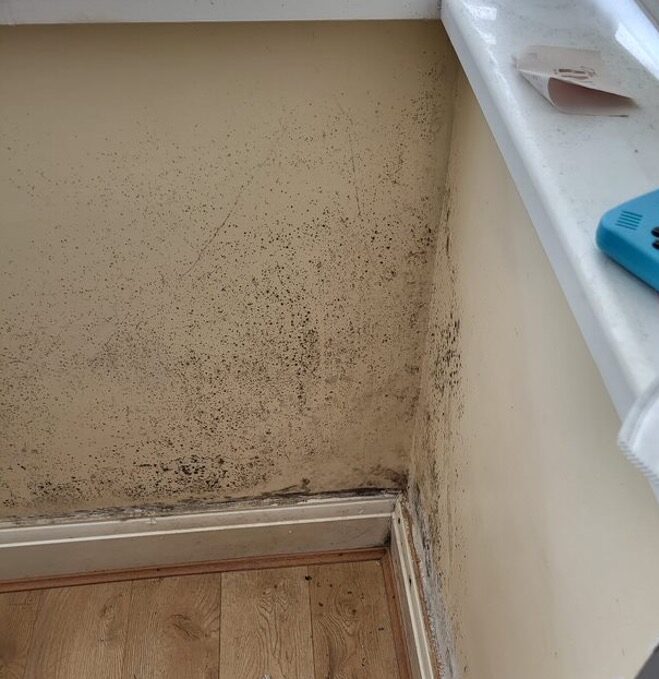Examples of Dealing with Damp and Mould around Bay Windows
We encounter new problems with bay windows every year while DraughtBusting. The mini case study below, responding to a query on this, is a good example of the type of things that we come across.
Bay Window Damp Query
Just had a quick damp question. Attached are some photos of a 1930’s room that has a lot of damp.
Do you think the vent could be making that part of the wall damp?
Should the vent stay or get taken out do you think?
They are thinking to get a damp proof course too for the property.



DraughtBusters Response, Thoughts and Suggestions
The air vent might be or have been a requirement for a combustion appliance, I hate them but it could be a legal requirement, is there an open flued fire or boiler? (response to this, “There is no fire, boiler or any kind of combustion in the room at all” )
The damp is almost certainly condensation, and I don’t think a draught proofing course (dpc), will make any difference. The clue is mould on the surface of the skirting board.
My preferred solution would be external wall insulation to the whole of the bay window, or the whole front of the house, the underfloor vents will need to be preserved if there is a suspended floor but I would take insulation (EPS) to 300mm below ground level and use silicone render.
The bay masonry might only be 100mm, causing the extreme cold and causing it to act like a dehumidifier for the house!
It will be important to keep the walls clear of stuff to allow good air circulation in the whole of the bay.
Internal wall insulation may be cheaper and easier, I would like to see 80mm of insulated plasterboard, no battens possible new internal window board. Any works should comply with part L1b of the current building regulations.
If you want to do a check for rising damp or damp brickwork drill a 5mm hole 65mm deep in the wall 20mm above the skirting 100 mm from the external corner, collect the dust and immediately seal in a zip bag and send to me in the post, I can analyse it for percentage moisture it is highly likely to be not damp.
………….
One bay window that was not as bad as this one was cured by simply squeegeeing the glass every morning with a ‘window vac’ that collected the water which was then disposed of down a sink.
For related guidance and advice you can also read more on condensation in this mini case study.
If you have a draught proofing query then you can email us, follow our socials on instagram or facebook or join our facebook group for sharing tips and advice.

